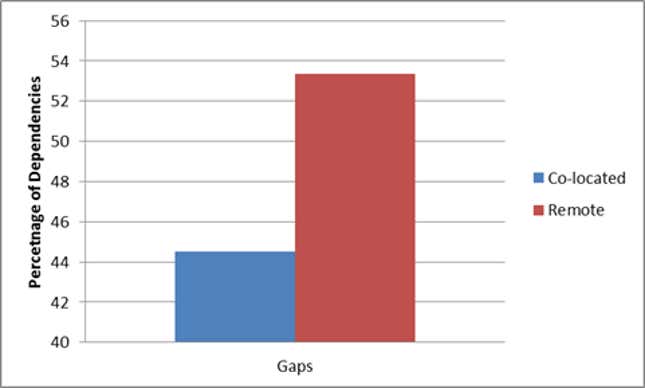Yahoo’s recent decision to force workers to come into the office rather than work from home has come under intense scrutiny. In Silicon Valley and the tech world in general, having a flexible work environment has essentially been table stakes. What seems like a quick and arbitrary, decision has thrown the community, and the media, into an uproar.
This decision is certainly tough to swallow for employees who live in a different city than their teammates. They’re faced with the unappealing prospect of moving their family, enduring a multi-hour commute, or even finding a new job.
Derek Thompson from The Atlantic and Vickie Elmer from Quartz have both decried this move and point to the benefits of workplace flexibility. When a Chinese travel agency allowed people to decide whether they come to the office on a specific day, productivity went up 22% (notably, over 70% of this increase came because employees worked longer hours). While that result, and others cited in Thompson’s article, is not in itself terribly convincing for organizations that need complex teamwork or are looking to build long term organizational competence, there is general consensus that allowing people to occasionally work from home is a great option. After all, when people are incredibly stressed out about personal issues or working parents need to tend to their children, they’re not going to be very productive at work. So it makes business sense for people to have time to deal with these issues.
There is a major difference, however, between people working from home a few days a month and people working from home every day of the year. Thompson and others don’t cite any hard data about these effects beyond their call center example, and therein lies the problem. You can imagine how various aspects of the workplace, from group cohesiveness to morale to information flow and organizational learning can suffer when people don’t work in the same place as the rest of their team. In fact, in a comprehensive study on call center performance where my research team at MIT collected hard behavioral data on employee communication, we showed how the vast majority of overall call center performance is actually predicted by employee face-to-face interaction.
Along with Kate Ehrlich and Mary Helander from IBM, I actually investigated precisely how co-located and distributed teams collaborate and how this communication related to software bugs. By collecting a rich data set not just on communication, but on the dependencies between different code modules, we were able to discover a number of ways that both co-located and distributed teams could improve their coordination.

In this project we examined a medium-sized development team of 161 programmers working across 20 sub-teams. These teams heavily utilized a software development environment that recorded data on code dependencies and also provided communication tools for people to comment on pieces of code or directly with each other. We scraped this data from the development environment, in total obtaining records on thousands of dependencies and tens of thousands of comments.
From this data, we saw that remote programming groups were 8% less likely than co-located groups to communicate about critical software dependencies. In his seminal paper, Marcelo Cataldo and his colleagues showed that this lack of communication translated into 32% longer code completion times. For Yahoo, then, this means their workforce becomes about 3% more effective with the stroke of a pen. As I discussed in an earlier blog post, this small number can make a huge difference. A 3% increase in performance across Yahoo would translate into approximately $150 million of additional revenue each year.
This is not to mention the long term benefits of co-location: serendipitous conversation and lunch with colleagues, which builds social capital that pays huge benefits for both the individuals and the organization. Suffice it to say, Yahoo probably did the right thing for the long term, but went about it in a very poor way. They could have phased in co-location and been more transparent about implementation.
But Yahoo is not in a great market position. A few percentage points could make the difference between life and death. Rather than engage in polemics about what we feel is the right thing to do, people should base their arguments on real data, and the data convincingly shows one thing: co-location is the best choice for the workplace.
